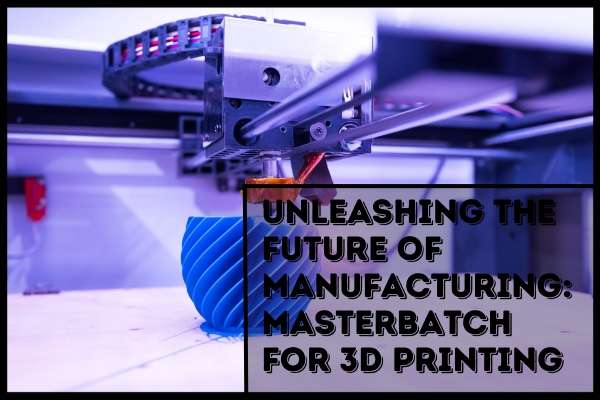
Sep 19,2023
In the ever-evolving manufacturing landscape, 3D Printing has emerged as a game-changer. It's a technology that promises to revolutionize how we create products, from intricate prototypes to personalized medical implants. At the heart of this transformative process lies a little-known but critical component: Masterbatch. Let's delve into 3D Printing and discover how Masterbatch is shaping its future.
Before we plunge into Masterbatch's role, let's first grasp the magnitude of the 3D printing revolution. According to recent data, the global 3D printing market is expected to reach a staggering $37 billion by 2026, with a compound annual growth rate (CAGR) of approximately 17%. This technology spreads its wings across industries, from aerospace and healthcare to automotive and fashion.
3D Printing, also known as additive manufacturing, allows objects to be created layer by layer from digital designs. It departs from traditional subtractive manufacturing methods, which involve cutting, milling, or drilling material away from a solid block. This fundamental difference opens up a world of possibilities, and that's where Masterbatch comes into play.
Masterbatch is a concentrated mixture of pigments and additives dispersed in a carrier resin. While it's commonly associated with coloring plastics, its role in 3D Printing goes far beyond aesthetics. Masterbatch is an unsung hero that enhances the functionality, durability, and versatility of 3D-printed parts.
The visual appeal of 3D-printed objects, whether a custom-designed prototype or a consumer product, is often crucial. Masterbatch allows for precise color matching, ensuring the final product meets the exact color requirements. This is especially important in the fashion and product design industries, where aesthetics play a pivotal role.
Moreover, Masterbatch can be used to achieve a variety of textures and finishes, giving designers and manufacturers the creative freedom to replicate anything from a glossy sheen to a matte surface.
3D printing materials need to strike a balance between strength and flexibility. Masterbatch additives can be introduced to enhance the mechanical properties of the printed parts. This includes improving tensile strength, impact resistance, and thermal stability. For industries like aerospace and automotive, where safety and performance are paramount, Masterbatch plays a vital role in ensuring the reliability of 3D-printed components.
The medical field is another arena where Masterbatch for 3D Printing shines. Customized medical implants, prosthetics, and dental devices benefit from the precision and biocompatibility offered by 3D Printing. Masterbatch can be tailored to meet the specific requirements of these applications, ensuring patient safety and comfort.
Sustainability is a growing concern, and 3D Printing offers a more eco-friendly alternative to traditional manufacturing methods. Masterbatch for 3D Printing can incorporate recycled materials, reducing the environmental impact of the production process. This aligns with the broader trend towards greener and more sustainable manufacturing practices.
As with any technology, 3D Printing and Masterbatch are not without challenges. One major hurdle is ensuring consistent quality and performance across various 3D printers and materials. Research and innovation are ongoing to develop masterbatch formulations compatible with a wide range of 3D printing technologies, ensuring a seamless experience for manufacturers.
Moreover, the demand for new and exotic materials for 3D Printing is rising. This includes materials with unique properties like electrical conductivity or biodegradability. Masterbatch is at the forefront of these developments, allowing for the creation of novel materials that push the boundaries of what 3D Printing can achieve.
The synergy between 3D Printing and Masterbatch drives innovation across industries, from healthcare and aerospace to consumer goods. As technology advances and new applications emerge, the demand for specialized masterbatch formulations tailored to 3D Printing will continue to grow.
In conclusion, 3D Printing is reshaping the manufacturing world, and Masterbatch is the unsung hero enabling its potential. With the ability to enhance color, texture, strength, and sustainability, Masterbatch is a critical component in the 3D printing process. As we look to the future, expect to see even more exciting developments in 3D Printing, with Masterbatch playing a central role in unlocking new possibilities and pushing the boundaries of what's possible in additive manufacturing.
So, the next time you marvel at a finely detailed 3D-printed object, remember that Masterbatch played a crucial role in bringing it to life, adding color and functionality to the vision of designers and engineers worldwide.